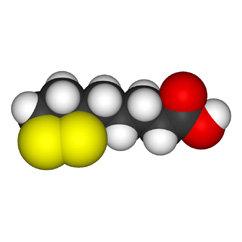Glutathione is an antioxidant that is produced by our body. It is frequently described as a small tripeptide molecule, but I’m not certain that information is very useful to many people, although it certainly sounds very official. For most people, I find that what is more useful information is to talk more about; antioxidants, what is unique about glutathione and why you need it.
Antioxidants are molecules that can neutralize other damaged molecules called free radicals. Unlike a stable molecule which includes an even number of electrons, free radicals – for one reason or another- have lost an electron and therefore have an odd number. To re-establish a normal, stable state, a free radical will “steal” an electron from another molecule. This sets up a chain reaction which will eventually damage the cell made up of these unstable molecules. Free radicals are created by forces that are both natural and manmade and which occur both within and outside of the body.
An example of free radical creation within the body from a natural force would be that free radicals are a by-product of our energy production or metabolism. Think of your body burning energy to fuel your cells like a fireplace. What accumulate at the bottom of the fire place are ashes. Free radicals are similarly a by-product of your body’s fire and like the ashes in a fireplace, need to be cleaned out in order for the fire to continue to burn efficiently. To continue the analogy, imagine how the fire progressively becomes smothered by the buildup of ashes until it eventually dies. The same thing happens to the cells in an organ, which eventually can affect the operation of the organ and in time the rest of your body. This is actually a very simplified look at aging.
Back to antioxidants. Antioxidant molecules are structurally able to donate an electron to a free radical without themselves either becoming free radicals or instead becoming free radicals that lack the ability to capture electrons from other molecules. That they accomplish by donating electrons to a free radical is that they stop the chain and the damage it causes.
Most of the antioxidants in your body are specialized and some of the best known antioxidants are Vitamins C and E, Coenzyme Q10, Alpha Lipoic Acid and finally glutathione.
Glutathione is an antioxidant that your body makes. It isn’t possible to ingest it- like we do with Vitamin C. What’s unique about glutathione is that it is found in every cell of your body and is uniquely capable of dealing with every kind of free radical (and there are many different kinds)
Many of the people suffering from what are referred to as the chronic diseases of aging – like heart disease, Alzheimer’s Disease, Parkinson’s disease to name a few are also found to have low levels of glutathione. Very low levels of glutathione have also been found in children suffering from autism.
When we are young, our bodies produce lots of glutathione but as we age (in fact as we leave our twenties) our natural ability to manufacture this vital antioxidant falls by about 10% every decade. With less glutathione in our systems, free radical damage builds up, more cells and then organs are harmed and our bodies age. Many say that we age prematurely.
So, the reason to get more glutathione into your system is to help avoid or at least hold off, those conditions that come about as our organs function less efficiently and hold off the side effects that come with that – like the pain from chronically inflamed joints or a lack of mental focus, clarity, fatigue and poor sleep that happen with aging.
Glutathione can be administered intravenously, although it is a very inconvenient and expensive process. Glutathione cannot be taken as an oral supplement because its components (in particular and enzyme called Cysteine) are easily destroyed by the gastric juices in your digestive system. What can be done it to supplement with products called glutathione precursors. MaxGXL, MaxONE & Cellgevity are all glutathione precursors, which mean that they are nutritional supplements that boost your body’s supplies of the building blocks it uses to make glutathione. These products have all been proven to increase glutathione levels by over 300% in a few months.
